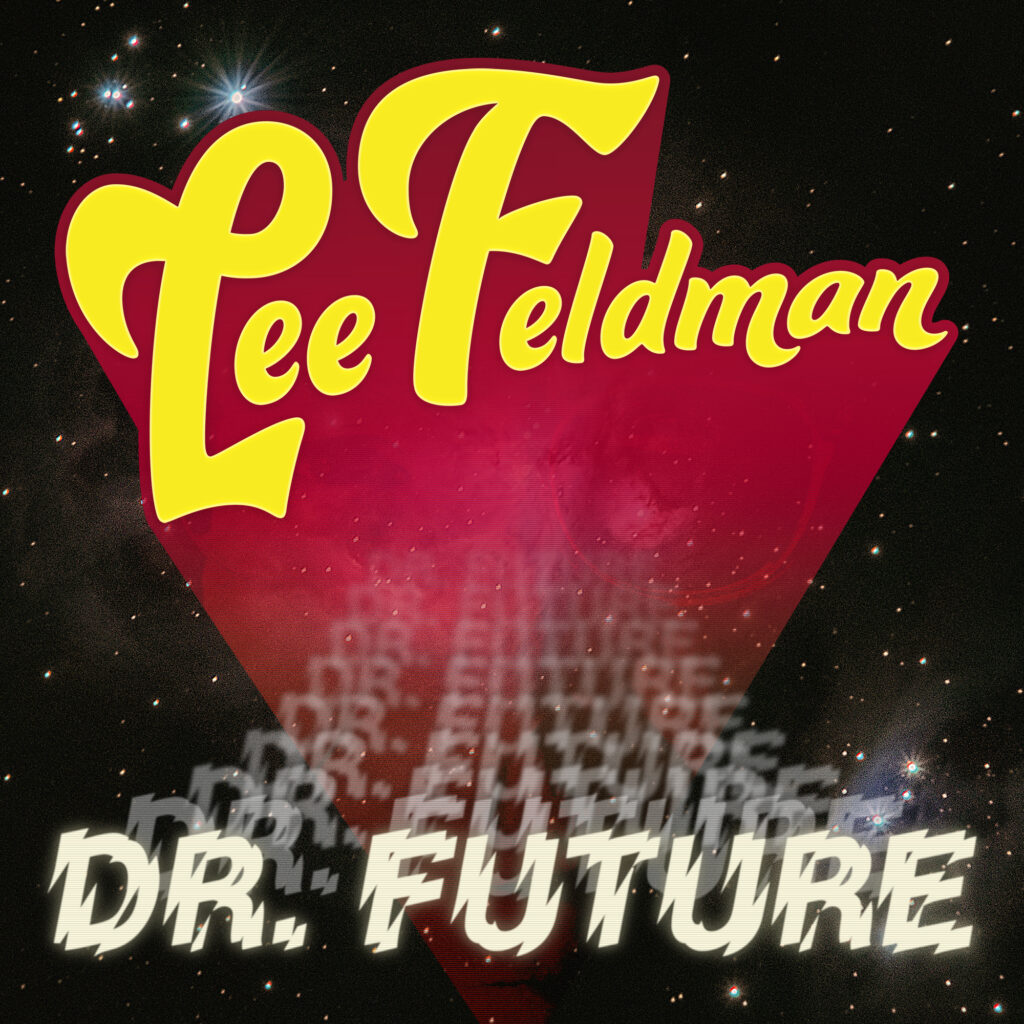
If a celebrated songwriter and his band of amazing musicians fell in the forest, and nobody else was there, would they make a sound?
Interesting question. Lee Feldman’s new album is “Dr. Future,” an imaginary musical.
It’s his fifth full-length release, the first one released under his name in over a decade.
Looking back upon a critically acclaimed career stretching over four decades fusing adventurous musical experimentation with masterful pop songwriting, we confess to some surprise that Lee believes this is only the first time he has achieved some of the things he’s been striving for.
We’ll let him take it from here:
“I call it an imaginary musical because you can construct a narrative in your mind as you listen. The words don’t get in the way. The characters — Dr. Future, Bob Stein, The Cowboy, The Woman at the Sink – populate the songs, but the lyrics don’t tell you exactly what they are doing or how they’re related. The listener constructs that herself through the pacing and emotional content of the music.”
That doesn’t seem like a template for a big pop hit.
“Possibly, but you never know. I feel like I’ve played the long game, and tried to produce music that had meaning for me and excited me. I always felt like there was a chance that my stuff could break through, and that if it did, I would feel comfortable with it, because it was work that I liked.”
So why make albums anymore?
“For many artists of my generation, great records on vinyl shaped our imagination and aspirations. CDs or digital downloads are OK, but the size of an LP allowed for a mix of design, photography and words that you could sink into as you listened to the music. And the physical necessity of having to turn the record over to listen to the other side provided a natural rhythm to the listening session.
I started thinking about what kind of response I wanted for “Dr. Future.” What kind of response DOES an artist need, or even want? Is it enough if an artist produces something they like, but doesn’t put it out into the public realm? (Emily Dickinson comes to mind). What if only 10 people hear it, or see it, and are moved by it… is that enough? Do people have to purchase the art for the artist to be satisfied? How much money has to be made? What if a million people stream a song, but only listen to 3 seconds of it?”
So, Lee Feldman… what is enough?
“After a lot of reflection, I realized that what I really wanted was not that millions of people would HEAR it (although I suppose that would be nice) but that people would actually LISTEN to it and respond in a meaningful way.
This is when I started thinking about “Slow Listening.” The concept is related to thoughts that I’ve been having about the unsustainability of our current way of life. I believe scientists when they say that it’s almost certain that big (and mostly unpleasant) changes are in our future, and that the future is already here.”
No time like the present, right?
“It seems like a good time to start re-imagining the future, and one thing I would like to see in the future is a place where it feels like the past. Where people could get together, space out, and listen to an album together for 35 minutes.”
To kick off this Slow Listening idea, Lee arranged a Listening Party at the Chelsea loft of his best friend (it’s always good to have a friend with a Chelsea loft). He then invited friends and fans – people he thought would “get it.”
“We put out small notebooks and pens, and I asked people to respond to the album with words, pictures, whatever felt appropriate.
The contributions were more than I could have hoped for. The open spaces in the “Dr. Future” narrative allowed people to put their own thoughts and imagination into the notebooks. For me, it was exciting because it felt like the recording isn’t the end of the road, it’s just the beginning.
You then soft-released Dr. Future to your existing fanbase via the DrFuture.info website.
“Yeah, I wanted to let this work out into the world a little gently, so “soft-released” is a good term. I wanted to continue the vibe of the Listening Party, and open it up for more people to contribute their ears, thoughts and energy to this imaginary musical within a defined space (the website). I envisioned the website as a kind of small, cozy theater and I encouraged (and still encourage) people to send me their ideas, drawings, reactions, through the website.”
Now you’re bringing Dr. Future to a much larger potential audience via streaming services. Any advice for listeners — both new and old — on how best to listen to Dr. Future?
“I’m excited by the idea of bringing the intimacy of the recording, and the open-endedness of the imaginary musical concept, to the sonic streamscape. Ideally, people will listen to the album in an undistracted way and be immersed in this strange world for a little over 36 minutes. Who knows what Dr. Future will become?”